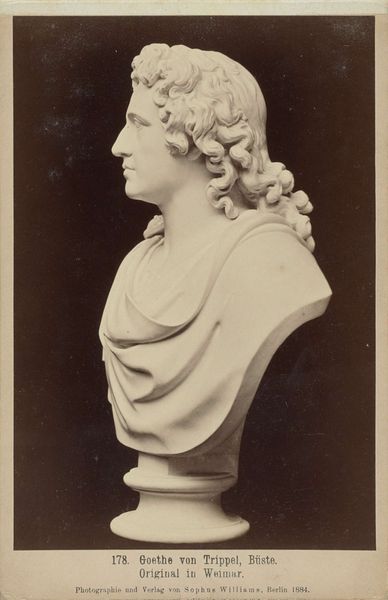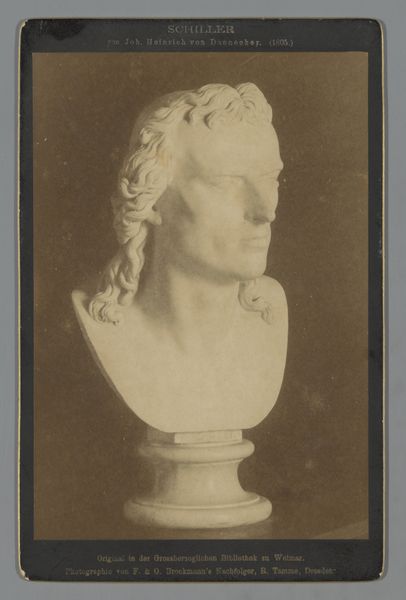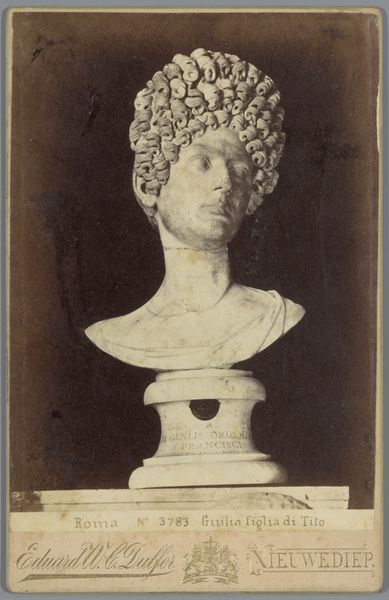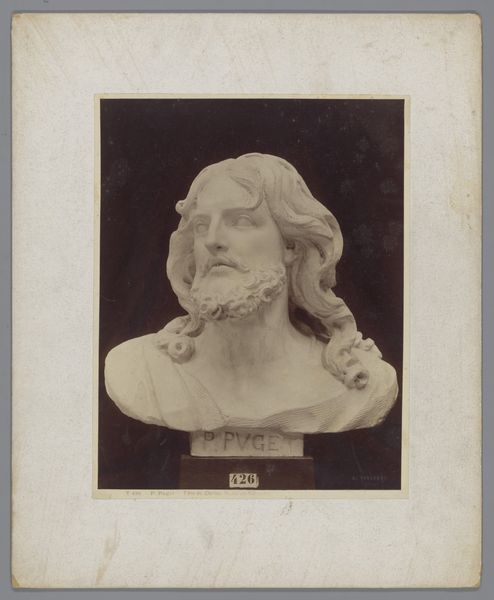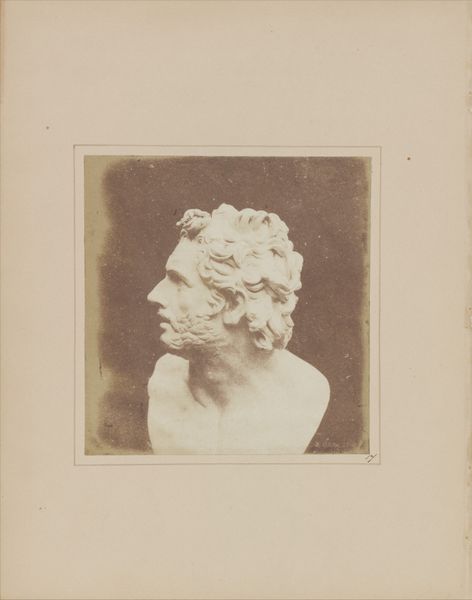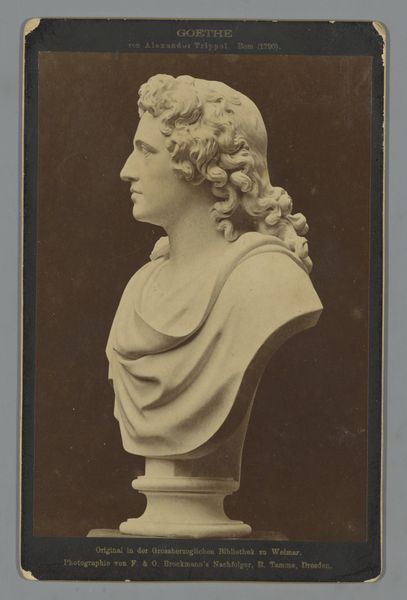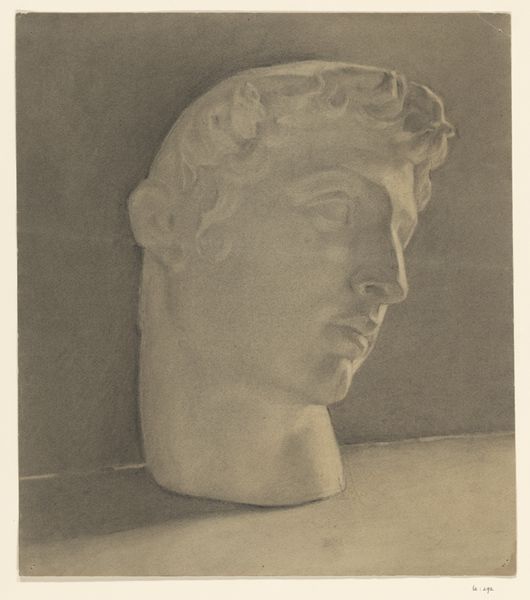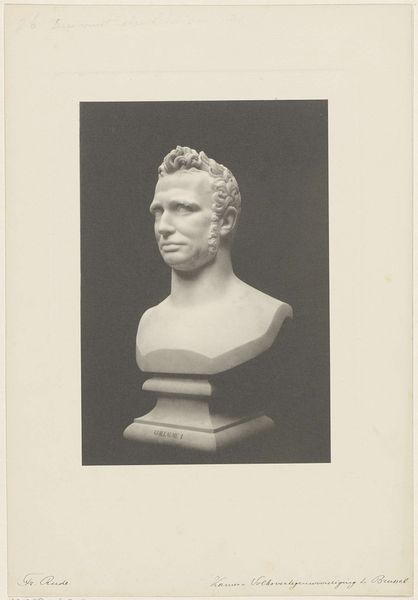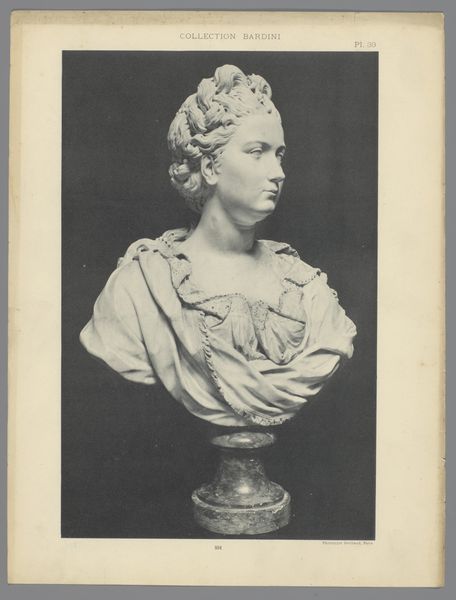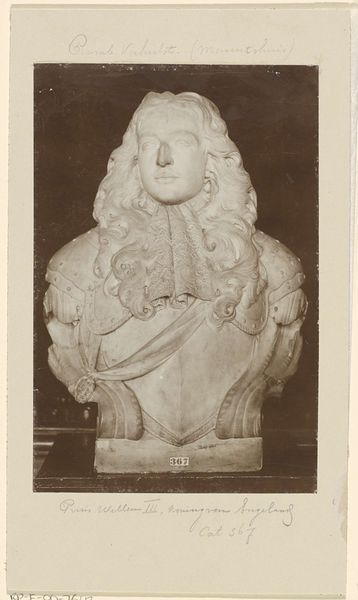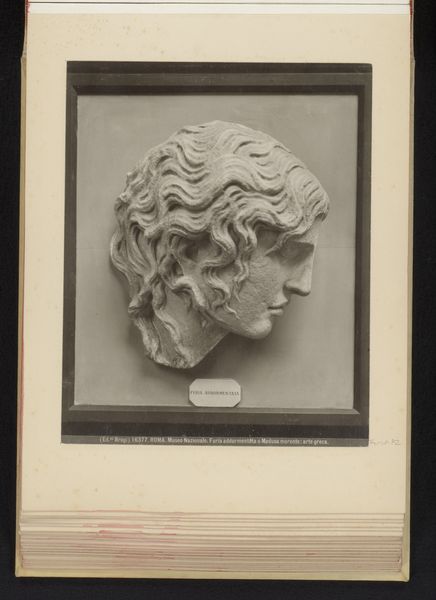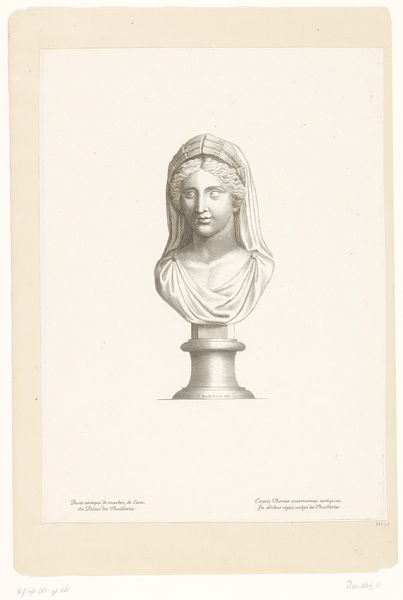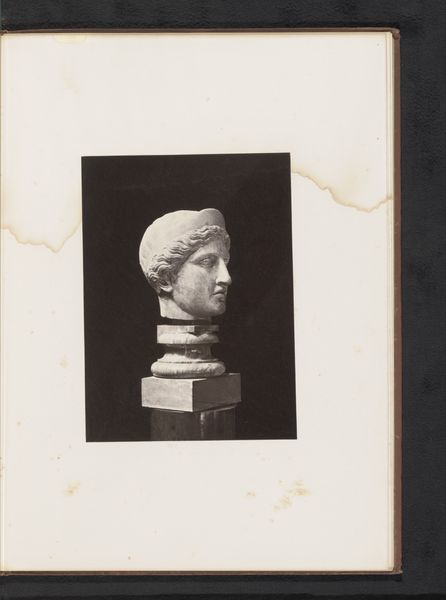
bronze, photography, sculpture, gelatin-silver-print
#
sculpture
#
classical-realism
#
bronze
#
photography
#
sculpture
#
gelatin-silver-print
#
history-painting
#
academic-art
Dimensions: 29.7 x 26.6 cm (11 11/16 x 10 1/2 in.)
Copyright: Public Domain
Curator: I'd like to draw our attention to Roger Fenton's photograph, "Laughing Satyr," captured sometime between 1854 and 1858. This gelatin-silver print presents a sculpted bust. What strikes you first? Editor: Oh, the humor! It’s unexpectedly charming, and that little smirk – it suggests a whole world of mischievous thoughts brewing behind those stone lips. The broken neck is slightly unsettling, though. It makes me wonder about time and decay. Curator: It’s fascinating how Fenton captures a sculpture—already an echo of an idea—and transforms it again through photography. Consider the satyr as a symbol: the duality of man and beast, instinct and intellect, forever caught between worlds. What emotions do you think these symbols evoked for viewers in Fenton’s time? Editor: Well, perhaps it was a safer way to explore those animalistic drives within themselves, vicariously, of course. Seeing this fellow immortalized makes one almost forget those deeper societal restraints. Curator: Precisely! Photography in that era held an incredible power—to legitimize, to classify, and perhaps even to liberate the imagination within accepted cultural frameworks. Fenton’s composition almost mimics the classical portraiture, lending further legitimacy. Editor: You're right. This echoes back, creating an odd timelessness with modern science recording an old form of making. There's even a hint of erotic tension, a suggestion that the satyr’s joy isn’t entirely innocent. The shadow is very good and suggests a person in itself. Curator: Shadows, of course, possess strong ties to symbolism, both cultural and psychological, and can carry immense emotional weight. Do you find a thread of continuity between ancient pagan expressions and 19th-century interpretations here? Editor: Absolutely! A yearning for something more primal, maybe, or a desire to connect with a freer past. Even if that freedom remains within the confines of art. This piece manages to laugh in the face of rigid Victorian society, though subtly, I would say. It's almost cheeky! Curator: And in our contemporary gaze, perhaps the laughter challenges us to reconsider how we grapple with similar constraints today. The symbols evolve, yet the core tension remains remarkably constant. Editor: Definitely. It has sparked an intriguing train of thought!
Comments
No comments
Be the first to comment and join the conversation on the ultimate creative platform.
